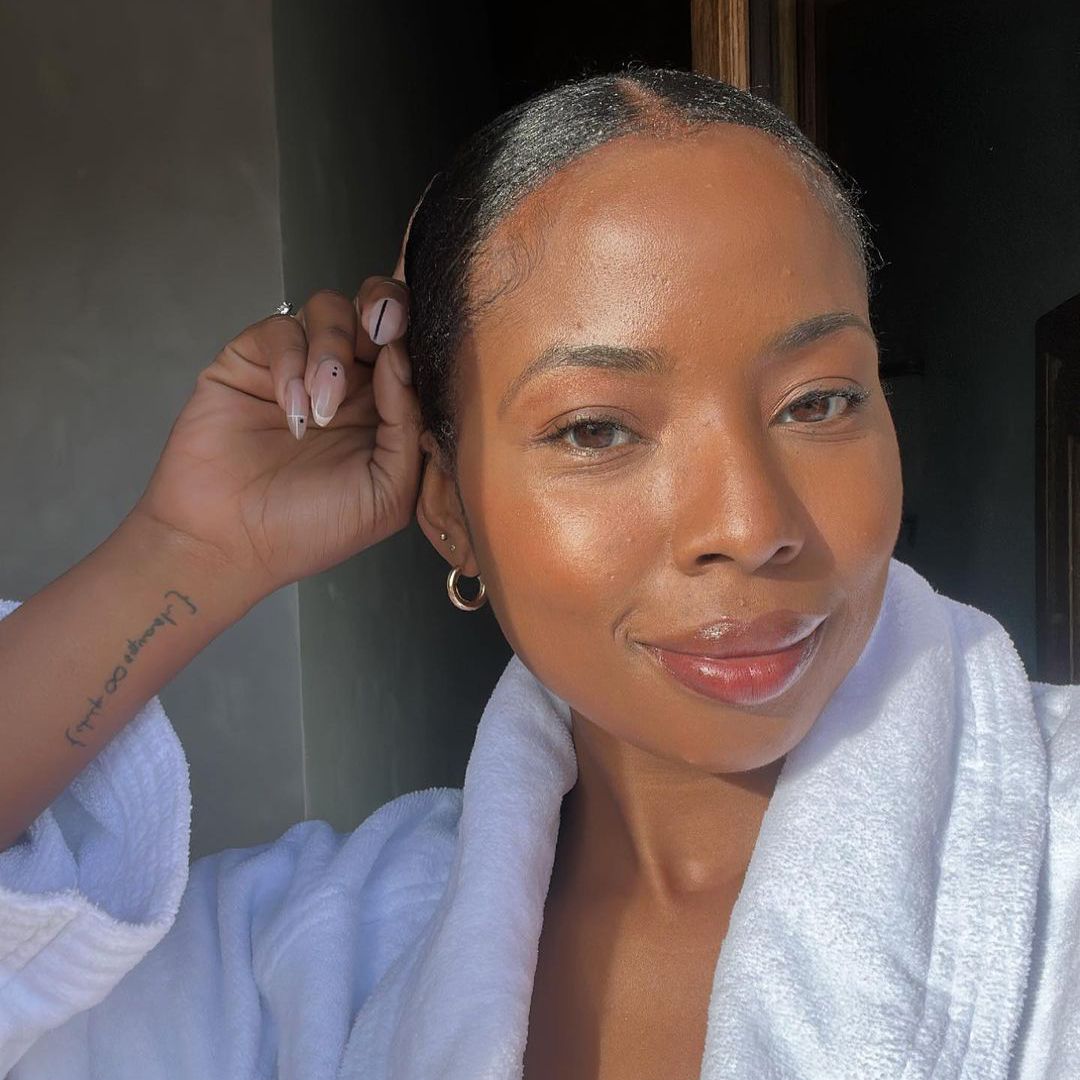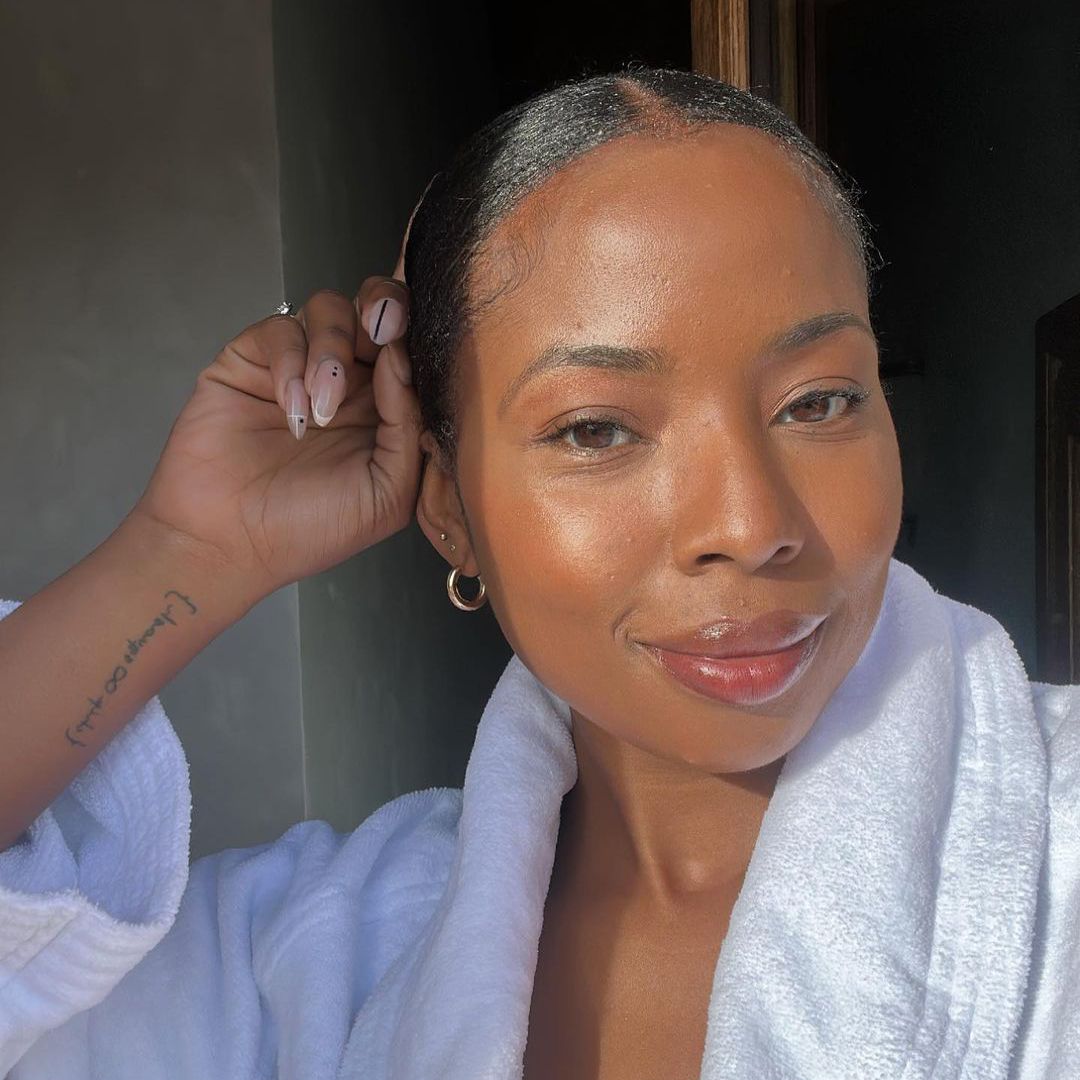
I don’t know about you, but the way my skin fluctuates throughout the month drives me a little crazy. One minute, my complexion is looking glowy and lifted. The next, I’m breaking out and feel like I’m retaining every ounce of water I’m drinking. The cyclical nature of womanhood is one that makes my reproductive and skin health more than a bit confusing. But it’s trueâ€â€because of the hormonal shifts that are almost constantly occurring, our skin is in anything but a homeostatic state throughout the month.
Menstruation, for example, can cause blemishes and even dryness. Ovulation can act like the fountain of youth, making your complexion look soft, glowing, and radiant. The luteal phase is peak progesterone time, when oiliness is at its highest, making skin a bit more acne-prone.
Being the naturally curious person that I am, I wanted to consult some leading experts on the journey our skin takes when going through the phases of the menstrual cycle. Below, you’ll find a comprehensive guide to everything your skin goes through before, after, and during your period. With the help of a few of my favorite dermatologists and gynecologists, I’ve gained unique insight into the skin’s dynamic responses. After reading below, I have no doubt you’ll be fully prepared for whatever your cycle brings.
What causes the skin changes throughout our menstrual cycle?
There’s a lot that happens to the body as we go through our menstrual cycle. As hormones fluctuate, so does the texture and quality of the skin. “Your skin is sensitive to hormones and responds differently in each phase of your cycle,” states Taraneh Nazem, double-board-certified REI & OBGYN at RMA of New York. “Progesterone and testosterone are the key hormones that can trigger breakouts and oily skin, and they rise and fall at different times in the menstrual cycle.” At the same time, other hormones like estrogen and substances like prostaglandins can also affect the appearance and sensitivity of the skin.

What are the different ways a person’s skin may change or react in relation to their menstrual cycle?
During each phase of the menstrual cycle (menstruation, follicular, ovulation, and luteal), hormonal fluctuations impact the skin. “The menstrual cycle is broken down into two main phases: follicular and luteal,” Nazem explains. “The follicular phase occurs between menstruation and ovulation, and the luteal phase begins after ovulation and lasts until the subsequent menstrual cycle.”
The first days of your cycle (aka your period) are marked by lower estrogen levels and higher amounts of progesterone. “This hormone dynamic can have negative effects on the skin such as an increase in oil production, which can clog the pores, leading to hormonal acne and irritation,” says Gaby Vaca-Flores, RDN, education manager at Hum. This is a great time to exfoliate, and it’s also wise to consider adding a calming product that contains niacinamide to your routine.
In the early follicular phase, around the time of menstruation, hormones levels are typically low, and therefore the skin appears drier and more dull. Prostaglandin levels are elevated at this time and can cause more sensitivity of the skin as well. “As estrogen levels rise through the mid to late follicular phase, some people will notice an associated ‘glow’ to their skin and a bouncier, more moisturized texture,” says Nazem. After ovulation, estrogen decreases and progesterone and testosterone rise, causing build up of oil or sebum in the pores and acne outbreaks.
“In addition to cyclic changes that occur through the menstrual cycle, there are also some gynecological conditions that can cause more frequent hormonal acne,” emphasizes Nazem. For example, PCOS, or polycystic ovary syndrome, is associated with high levels of circulating androgens (like testosterone) and therefore can cause acne.
What specific issues can individuals expect through each phase of their cycle?
“The menstrual cycle influences various aspects of your skin’s appearance due to hormonal fluctuations,” according to Shereene Idriss, board-certified dermatologist, founder of Idriss Dermatology in NYC, and creator of the #PillowtalkDerm series on Instagram.ÂÂ
During the menstrual phase (days 1 to 5) you can experience heightened skin sensitivity and higher likelihood of irritation. This is the time where your skin is more inflamed than usual.ÂÂ
In the follicular phase (days 6 to 14), estrogen levels rise, which may help to mitigate inflammation, but with rising estrogen levels comes increased sebum production, causing some individuals to experience oilier skin.
During ovulation (day 14), the so-called “glow” that is very short-lived is attributed to increased blood flow to the skin.
And finally, the luteal phase (days 15 to 28) is the time you might “look in the mirror and ask, What is going on with my skin?” comments Idriss. You have increased skin sensitivity, acne flare-ups due to rising progesterone levels, and premenstrual symptoms such as bloating.

Some individuals claim extreme skin changes such as luteal phase facial asymmetry. Is this true?
The short answer? While you might experience some changes in your skin quality throughout your cycle, the shape and appearance of your skin is not changing. “Luteal phase facial asymmetry has not been proven in clinical study,” emphasizes Nazem.
What are some skincare tips for healthier-looking skin throughout the menstrual cycle?
“Your cycle is ongoing, so the biggest tip when you do experience the occasional breakout or stressed out–looking skin is it to treat it appropriately and maintain a consistent skincare routine throughout,” recommends Idriss.
“In my opinion, trends that lean into a rigid, one-size-fits-all approach when it comes to skincare won’t have longevity, because they won’t stand up to practical, real-life usage,” says Whitney Bowe, dermatologist and founder of Dr. Whitney Bowe Beauty. Listening to your skin, and responding to your skin’s needs, is critical. For her, sticking to a flexible plan like skin cycling is key. Here, you alternative between different actives every night like a retinoid or exfoliant, and then recover for two consecutive nights, and repeat.
“I typically follow an advanced skin cycling schedule, but I make adjustments in my routine based on whether my skin is especially sensitive at a given time,” says Bowe. She advises listening to your skin and adjusting accordingly. “If you notice that your acne flares right around your period, you may choose to build in extra retinoid nights leading up to the day you start menstruating.” With dryness, an extra recovery night might be a great option to support the skin barrier. For oily skin, you can add a salicylic acid cleanser or a leave on salicylic acid treatment to prevent flare-ups or acne.
Strategic products to use throughout your cycle:

Dr. Whitney Bowe Beauty
Bowe Glowe Microbiome Nourishing Cream
A healthy skin barrier can keep breakouts, oiliness, and dullness at bay. Incorporating a product like this that has been shown to heal the skin barrier and can also help ease skin symptoms through the various phases of your cycle.

Youth To The People
Retinal + Niacinamide Youth Serum
Using retinal can reduce oil production in the days leading up to your period. The addition of niacinamide can work with your vitamin A derivative to tamper inflamed skin.

Peace Out
2% Salicylic Acid Early Stage Acne Dot
Feeling a painful pimple coming on can be annoying, so we recommend popping one of these 2% salicylic acid patches on to stop them from fully developing.

RéVive
Perfectif Night Even Skin Tone Cream
For those of us who tend to get discoloration or dullness, it may be better to opt for a night cream that heavily hydrates skin with brightening ingredients like this one from Révive.

The Inkey List
Salicylic Acid Acne + Blackhead Cleanser
As per Bowe’s suggestion, incorporating a salicylic cleanser can help fight breakouts by removing excess oil and impurities, leading to the reduction of acne and blemishes.

Dermalogica
Precleanse Cleansing Oil
When you know you’re heading toward your luteal phase and need to be extra vigilant about cleaning the skin, a double cleanse can be the perfect antidote. An oil-based one like this will remove makeup, grime, and anything else before you go in a second time.

Tower 28 Beauty
SOS Daily Skin Barrier Redness Recovery Moisturizer
If you tend to get irritated and red during your cycle, a noncomedogenic moisturizer like this one from Tower 28 (packed with ceramides and hyaluronic acid) can assist in healing the skin barrier.

Topicals
Faded Serum for Dark Spots & Discoloration
We all get acne from time to time, so if you’re looking to fade your dark marks or discoloration, a serum especially formulated to do so will get you there. In Faded, niacinamide addresses discoloration and uneven skin tone, while azelaic acid brightens skin and improves texture.

Skinfix
Acne+ Adapinoid Gel With Niacinamide + Squalane
I personally stay away from a creamy moisturizer because my skin is super oily, so I like to use more of a gel to hydrate my skin. This one from Skinfix contains a retinoid and barrier-protecting ingredients, so I feel like I’m applying three different products in one.
Read the original article here



